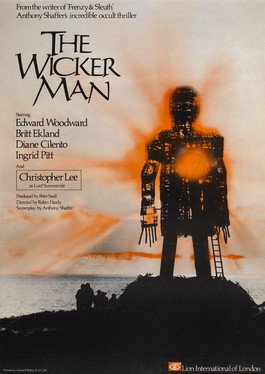A touch of Halloween horror from the College Library...
 This
illustration of a Wicker Man comes from The
Antiquities of Ancient Britain by Aylett Sammes (ca.1636-79), published in
1676 and in the collection of the College Library. The Wicker Man was a huge cage woven from long sticks into the shape of a
man. Hollow inside, it was filled with unfortunate men and beasts who were then
sacrificed by flame as the cage was set alight.
This
illustration of a Wicker Man comes from The
Antiquities of Ancient Britain by Aylett Sammes (ca.1636-79), published in
1676 and in the collection of the College Library. The Wicker Man was a huge cage woven from long sticks into the shape of a
man. Hollow inside, it was filled with unfortunate men and beasts who were then
sacrificed by flame as the cage was set alight.
This is the first known pictorial representation of the Wicker Man. The author based his observations on ancient accounts by Julius Caesar and Strabo:
‘They made a Statue or Image of a MAN in a vast proportion, whose Limbs consisted of Twigs, weaved together in the nature of Basket-ware: These they filled with live Men, and after that, set it on fire, and so destroy’d the poor creatures in the smoak and flames.’

This image became an iconic representation of ancient British religious practices. It has also managed to infiltrate popular conscience to the present day, and provided the visual inspiration for the cult horror film of 1973, The Wicker Man. This was written by Anthony Shaffer, inspired by David Pinner's 1967 novel Ritual, and starred Edward Woodward, Britt Ekland and Christopher Lee. The story centres on the visit of Police Sergeant Neil Howie (Woodward) to the isolated Hebridean island of Summerisle, in search of a missing girl. Howie, a devout Christian, is appalled to find the inhabitants of the island practising a form of Celtic paganism.
His researches reveal that when there is a poor harvest, the islanders make a human sacrifice to ensure that the next will be bountiful. Believing the missing girl to be the next victim, he finds and rescues her, but in fact the villagers have him in mind for this gruesome fate. They force Howie inside a giant wicker man statue, and set it ablaze.
In 2004 the magazine Total Film named The Wicker Man the sixth greatest British film of all time.